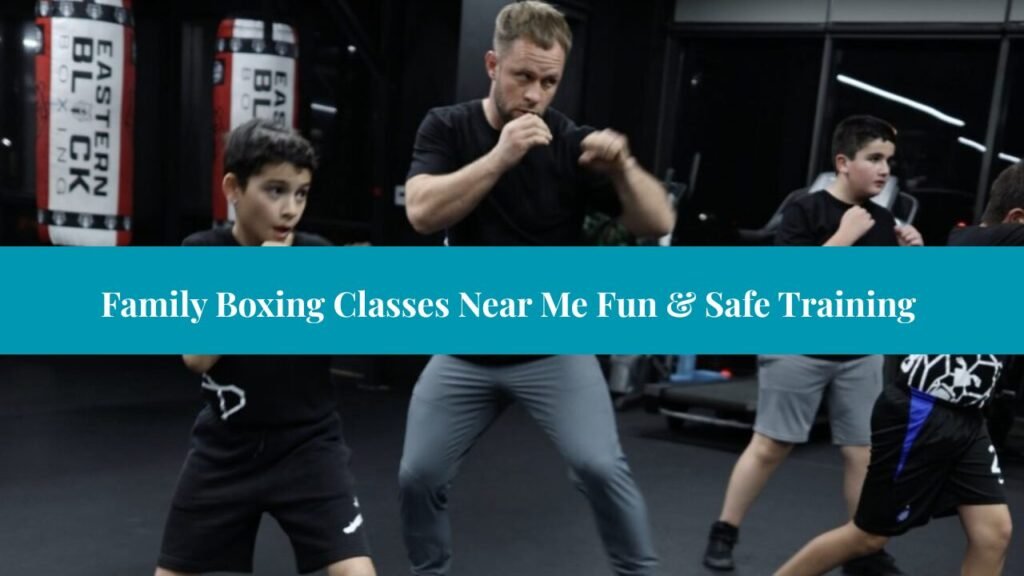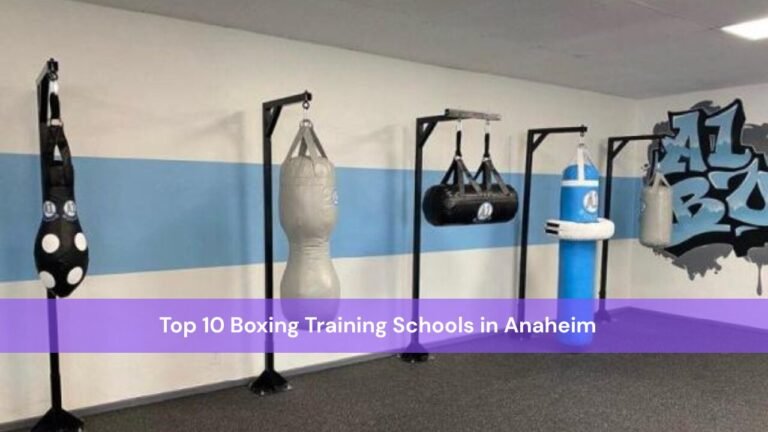Looking for family boxing classes near me that are fun, effective, and tailored to all ages? You’re not alone. With families seeking more active and engaging ways to bond, boxing is quickly becoming a top choice. Whether you’re aiming to build fitness, instill discipline in your children, or simply find a shared hobby, family-friendly boxing gyms offer structured, supportive environments that fit the bill.
In this comprehensive guide, we’ll explore the benefits of family boxing, what to expect in a class, how to choose the best local gym, and answers to common questions. We’ll also share insights from real boxing centers, expert recommendations, and key stats to help you make an informed decision.
Why Choose Family Boxing Classes?
Boxing isn’t just a competitive sport. It offers a holistic workout for the body and mind, with unique benefits for every family member. Physically, boxing improves strength, stamina, coordination, and flexibility. Mentally, it enhances discipline, concentration, and emotional control.
Families who box together often report stronger relationships, better communication, and a deeper sense of mutual respect. In fact, many families find that boxing offers a new, fun, and exciting way to connect without the distractions of modern life. It creates bonding time and shared goals while building confidence and offering a healthy outlet for stress relief.
What to Expect in a Family Boxing Class
Each gym has its own style and structure, but most family boxing classes near you will follow a similar outline. Classes usually begin with light cardiovascular activities such as jogging, jump rope, or dynamic stretching. This stage helps elevate the heart rate, lubricate joints, and prepare muscles for intense work, while also preventing injuries and enhancing performance.
The next segment typically focuses on teaching core boxing techniques. Participants learn punching forms like the jab, cross, hook, and uppercut, along with defensive movements such as slipping and weaving. Footwork drills and shadowboxing are also commonly included to refine technique and build coordination.
Conditioning and Cool Down in Boxing Classes
After practicing skills, many classes move on to conditioning. This section targets strength, endurance, and cardiovascular health using core exercises, bodyweight movements, and short bursts of activity in circuits. It’s an excellent way to build muscle, burn calories, and improve overall fitness for both adults and children.
At the end of the session, a cool-down period is crucial. Static stretching and breathing exercises help improve flexibility and return the heart rate to normal. This not only supports recovery but also prevents stiffness and soreness after class.
Family-Centered Modifications for All Ages
Instructors understand that families consist of individuals of all ages and skill levels. Exercises are often adjusted to suit children, teens, and adults alike. Simplified drills help younger participants stay engaged, while partner activities foster connection and cooperation between family members.
Rather than focusing on strict discipline, most family boxing classes emphasize encouragement and positive reinforcement. The atmosphere is supportive, allowing everyone to grow at their own pace while sharing the journey as a team.
How to Choose the Best Family Boxing Gym Near You
There are many boxing gyms to choose from, but finding one that caters to families can make all the difference. It’s important to find trainers who are certified and experienced in working with both children and adults. A coach with proper qualifications can teach safely and adapt techniques for different age groups and skill levels.
Safety and cleanliness are also essential. A good gym will provide sanitized gear, have first aid readily available, and ensure padded flooring to reduce injury risk. Flexible class schedules, especially evening and weekend options, help families fit boxing into their busy lives. A positive and inclusive environment promotes enjoyment and participation, which helps everyone stay committed.
Real-World Examples of Family Boxing Classes
Alvarez Family Boxing in California is an excellent example of a gym that understands the needs of families. This family-run facility offers group classes tailored to different skill levels, weekend fitness challenges, and friendly competitions. With over 180 reviews and a 4.9-star rating, it’s known for its welcoming and energetic atmosphere.
NRG Boxing in the UK also provides family-friendly programs focused on mental health, personal development, and fitness. Their coaches are trained in child development and create a space where parents and children can thrive together. In India, JustDial is a trusted source for finding local boxing gyms with user ratings, class information, and contact details.
Additional Benefits of Boxing for Children and Teens
Boxing helps children and teens in more ways than just physical fitness. It boosts self-confidence through skill development and enhances focus, particularly in academic settings. The structure of boxing classes provides tools for emotional regulation and helps young people manage frustration more effectively.
Socially, boxing promotes teamwork and peer interaction, allowing kids to build friendships and learn cooperation. For children with ADHD or behavioral challenges, boxing has been shown to improve focus and reduce impulsivity through routine and discipline.
Additional Benefits for Parents
For adults, boxing delivers a full-body workout without the need for heavy gym equipment. It offers cardiovascular improvements, strength building, and lean muscle development. Parents also report increased energy levels and reduced stress from regular participation.
The shared experience of training alongside children adds emotional value. Many parents enjoy the opportunity to bond in a healthy environment, free from digital distractions. It becomes a weekly highlight and a source of motivation and connection for the entire household.
The Science Behind Boxing
Scientific studies support the effectiveness of boxing for both physical and mental health. A 12-week study published in the Journal of Sports Science and Medicine showed a 13% increase in aerobic capacity and a reduction in body fat for participants. Boxing also sharpens reaction time and coordination, thanks to its intense focus on timing and movement.
Mentally, boxing reduces anxiety and promotes clarity. The concentration required to perform combinations trains the brain to stay focused, making it a powerful tool for mental well-being as well as physical fitness.
Common Myths About Family Boxing Classes
Many parents worry that boxing is dangerous for kids, but in reality, non-contact classes are standard for beginners, and sparring is always optional and supervised. Another misconception is that only serious athletes can join boxing gyms. In truth, most gyms welcome families of all fitness levels, including total beginners.
A further myth is that boxing encourages aggression. On the contrary, boxing teaches discipline, respect, and control. It helps children learn to manage their emotions and channel energy in a constructive and respectful way.
What to Bring to Your First Class
Before your first class, bring a water bottle and wear breathable athletic clothing. Some gyms provide gloves and wraps for first-timers, but bringing your own ensures proper fit and hygiene. A towel is helpful, and a small notebook can be a useful tool to track your family’s progress and goals as you develop your skills.
Tips to Stay Committed as a Family
Staying committed is easier when boxing becomes part of your family routine. Schedule sessions in advance and celebrate small achievements to keep the experience rewarding. Keep things fun and don’t worry about perfection. Let each family member take turns leading warm-ups or sharing new combos they’ve learned. This adds ownership and keeps everyone engaged.
Final Tips for Getting Started
Try booking a free or discounted trial session to experience a class firsthand. Talking to the instructor before the session can help you share any concerns or family needs. Set clear, achievable goals like attending two sessions per week or learning a new skill monthly.
Encourage each other, keep things light, and make your boxing journey fun. Whether through journal entries, progress photos, or family challenges, documenting your progress adds excitement and motivation to the process.
FAQs
What age can children start boxing?
Most gyms accept kids as young as 5–7 years old for introductory classes focused on movement and fitness.
Are classes safe for beginners?
Yes. Beginners are introduced to techniques slowly with an emphasis on safety. No-contact options are always available.
Do we need to buy equipment?
Basic gear like gloves and wraps is recommended after a few sessions. This ensures hygiene and proper fit.
How often should we attend?
2–3 sessions per week offers consistency without overwhelming kids or parents.
Will I be training my child?
Yes. Most family classes encourage joint activities, though some portions may separate age groups for skill-specific work.
Conclusion
If you’re searching for family boxing classes near me, there’s never been a better time to start. Boxing offers a unique blend of physical, mental, and emotional benefits that few other sports can match and it’s an ideal way for families to grow stronger together.
Whether you choose a local gym like Alvarez Family Boxing, explore directories like JustDial, or join community-focused clubs like NRG Boxing, you’re investing in more than just a workout. You’re investing in your family’s health, confidence, and connection.
Ready to throw your first punch together? Find a local class and start today.




